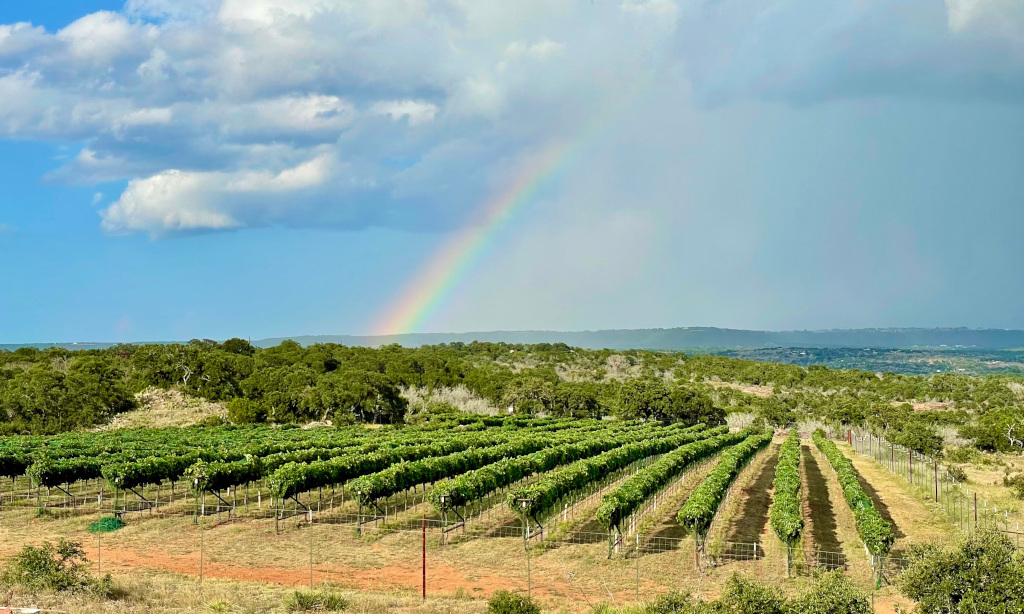Dry farming and irrigation farming are pivotal in wine viticulture, catering to the water needs of vineyards. Dry farming, prevalent in regions with adequate rainfall like Europe, relies on natural precipitation, encouraging deep root systems. Conversely, irrigation, often employed in arid regions like Texas, provides controlled water supply, ensuring consistent grape quality and yield. Particularly in Texas, irrigation mitigates drought stress, facilitating optimal vine growth and fruit maturation amidst fluctuating climatic conditions.
Drip Irrigation
Drip irrigation is the most used irrigation system in Texas and is considered one of the best water conservation practices for grape growing. Rather than expecting a plant to absorb water quickly, drip irrigation employs a small amount of water slowly, and when a vine truly needs to drink. Since wine grapes are not particularly thirsty plants, especially when compared to plants that need consistent waterings such as grass or cotton, grapevines can make use of a small amount of water if it comes at just the right time during the growing season. Drip irrigation puts this prized natural resource in the hands of growers who can further determine which grape varieties need more (or less!) water in total. Precision viticulture can be employed to some degree, where even the individual vines can be assessed, and the water dialed in to fit their singular needs.
Flood Irrigation
In mountainous terrain, flood irrigation is used to encourage melted snow or rainfall to flow into the path of a vineyard at the range’s base. While this is less precise than drip irrigation, it can be useful in the right circumstances. Where rainfall is incredibly low in desert regions, and aquifers are not available for alternative types of irrigation, flood irrigation may be necessary. To maximize the affect of this water runoff, shallow trenches are dug between the vines to coax the water into the ground where the root systems can take advantage of them.
While irrigation is a necessity for most of Texas’ vineyards, sustainable choices that set water management up for success are as well. Some grape varieties and rootstocks are better suited to drought conditions than others, and the most special varieties can adapt readily to the conditions they are surrounded by.


